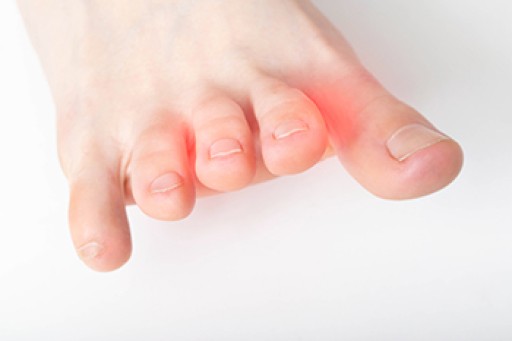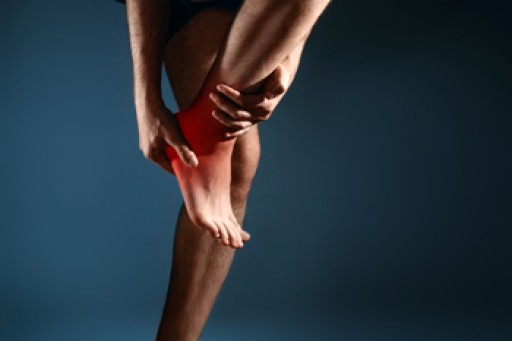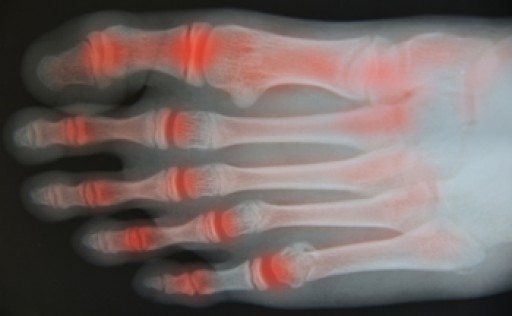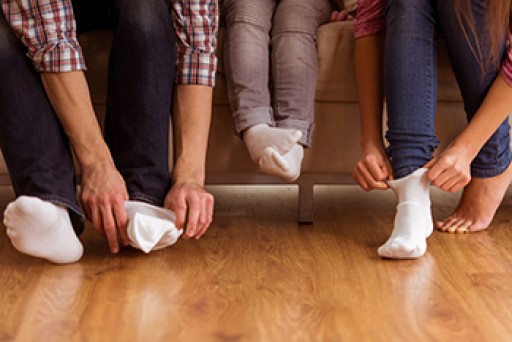 Each foot is composed of several nerves, tendons, and ligaments. When there is an overgrowth of tissue surrounding the nerves, it may indicate a condition that is known as Morton’s neuroma. The tissue compresses a nerve, and it can cause discomfort. It typically develops between the second and third toe, and the pain is generally felt in the ball of the foot. A common symptom that many people feel is the sensation of a pebble or marble in their shoe which may lead to a numbing and tingling feeling. It can develop as a result of wearing shoes that do not fit well, or from participating in high impact sporting activities. It can affect people who have existing foot conditions that can include bunions, hammertoes, or flat feet. A proper diagnosis can help to determine how this condition gets treated. This can consist of having an X-ray taken, or possibly having an ultrasound or MRI done. Some patients who are afflicted with Morton’s neuroma choose to have surgery which can permanently remove the neuroma. Please consult with a podiatrist who can determine what the best course of treatment is for you.
Each foot is composed of several nerves, tendons, and ligaments. When there is an overgrowth of tissue surrounding the nerves, it may indicate a condition that is known as Morton’s neuroma. The tissue compresses a nerve, and it can cause discomfort. It typically develops between the second and third toe, and the pain is generally felt in the ball of the foot. A common symptom that many people feel is the sensation of a pebble or marble in their shoe which may lead to a numbing and tingling feeling. It can develop as a result of wearing shoes that do not fit well, or from participating in high impact sporting activities. It can affect people who have existing foot conditions that can include bunions, hammertoes, or flat feet. A proper diagnosis can help to determine how this condition gets treated. This can consist of having an X-ray taken, or possibly having an ultrasound or MRI done. Some patients who are afflicted with Morton’s neuroma choose to have surgery which can permanently remove the neuroma. Please consult with a podiatrist who can determine what the best course of treatment is for you.
Morton’s neuroma is a very uncomfortable condition to live with. If you think you have Morton’s neuroma, contact one of our podiatrists of Lewis Wolstein, DPM, P.C. & Associates. Our doctors will attend to all of your foot care needs and answer any of your related questions.
Morton’s Neuroma
Morton's neuroma is a painful foot condition that commonly affects the areas between the second and third or third and fourth toe, although other areas of the foot are also susceptible. Morton’s neuroma is caused by an inflamed nerve in the foot that is being squeezed and aggravated by surrounding bones.
What Increases the Chances of Having Morton’s Neuroma?
- Ill-fitting high heels or shoes that add pressure to the toe or foot
- Jogging, running or any sport that involves constant impact to the foot
- Flat feet, bunions, and any other foot deformities
Morton’s neuroma is a very treatable condition. Orthotics and shoe inserts can often be used to alleviate the pain on the forefront of the feet. In more severe cases, corticosteroids can also be prescribed. In order to figure out the best treatment for your neuroma, it’s recommended to seek the care of a podiatrist who can diagnose your condition and provide different treatment options.
If you have any questions, please feel free to contact our office located in Co-Op City, NY . We offer the newest diagnostic and treatment technologies for all your foot care needs.











